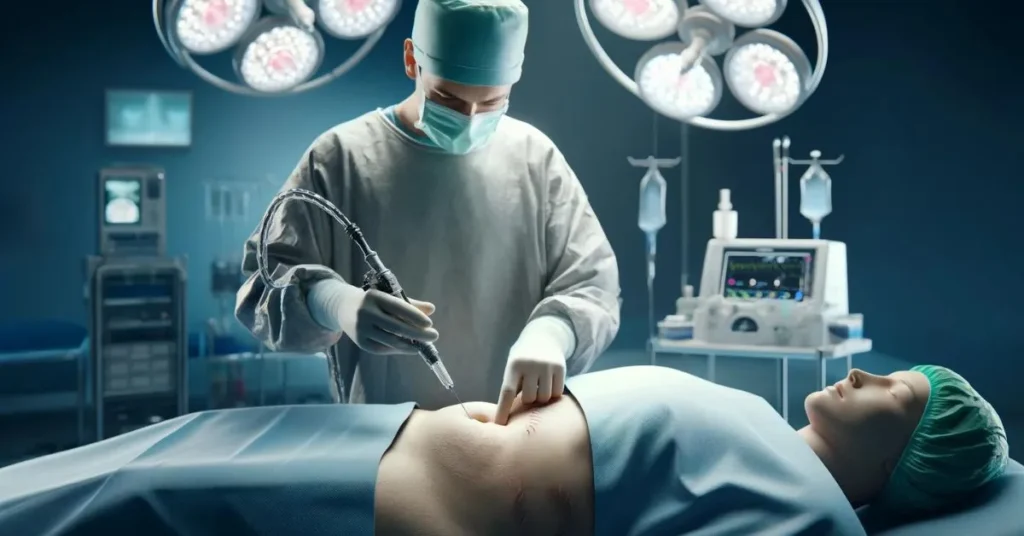The Science Behind Liposuction- Recent years have witnessed an increased interest in liposuction as an approach to body sculpting. Although most people understand its basic concept–removing fat from certain body parts–its scientific principles remain fascinating, and this piece examines them further, providing clarity into the processes involved and providing light on systems supporting it.
Contents
Fat Cells
The nature of fat cells must be understood before one can appreciate how liposuction operates. The specialized cells that store energy as fat are called fat cells, or adipocytes. As intake surpasses expenditure, they accumulate extra energy and contract in accordance with the body’s energy requirements. With liposuction, you can achieve your ideal body by targeting stubborn fat deposits and sculpting your silhouette to perfection.
Liposuction Techniques
There are various methods of liposuction, and each one has a different strategy for removing fat. Though the basic idea is still the same, it involves deliberately disrupting and eliminating fat cells from particular body parts.
Tumescent Liposuction
Umbilical cord liposuction is among the most widely used methods. Injecting a specific solution into the desired location is the approach used in this procedure. Adrenaline to constrict blood vessels and minimize bleeding, numbing medications, and sterile saltwater (saline) are usually used in this solution. Following injection, the fat cells enlarge and harden up due to the solution, which facilitates their extraction.
Mechanical Disruption
The surgeon places a narrow, hollow tube known as a cannula into the treated area after administering the tumescent fluid. The fat cells are efficiently separated from surrounding tissues by the cannula’s mechanical breaking apart, which is accomplished by a back-and-forth motion.
Suction
The loosening fat cells are simultaneously drawn out of the body by suction via a vacuum device attached to the cannula. For effective fat removal and shape shaping, this suction procedure is essential.
Ultrasonic And Laser-Assisted Liposuction
Other methods used for fat removal include tumescent liposuction and laser or ultrasonic energy. Ultrasonic waves are used to liquefy fat cells before sucking them out using ultrasonic liposuction; laser energy can help break them up and liquefy fat cells to make this process simpler.
Cell Disruption And Removal
The basic objective of liposuction is to rupture and extract fat cells from the body, regardless of the method employed. These adipose cells do not grow again once they are eliminated. Liposuction is a body reshaping technique intended to target stubborn fat deposits resistant to diet and exercise, not a weight loss cure.
Recovery And Results
Patients usually have mild soreness, bruising, and swelling after liposuction; these adverse effects wear off over time. As the body heals and the swelling goes down gradually, the full effects might not be seen right away. Yet, once the swelling goes down and the treated area recovers, patients should anticipate observable changes in their body’s profile and form.
Conclusion
Liposuction’s science demonstrates our expanding understanding of fat metabolism and medical advances. Individuals can achieve their cosmetic goals and increase confidence with liposuction by targeting and extracting extra fatty cells from specific areas. Liposuction provides an invaluable cosmetic surgery tool that allows people to sculpt their bodies for the desired silhouette.
FAQs
What is liposuction, and how does it work?
In other words, liposuction is purely a cosmetic operation aimed at removing unwanted fat from selected areas with an intention to decorate and reshape body contours. It entails the introduction of a special solution that loosens fat cells, which are, in return, mechanically disrupted and aspirated out of the body with the help of a cannula. In other words, tumescent liposuction, ultrasonic, and laser-assisted methods make it very facile for cells with fat to be targeted and removed.
Is liposuction a solution for weight loss?
No, it’s not a type of treatment to reduce weight. It’s designed to remove certain parts of stubborn fat deposits, which resist even diet and exercising. This makes it ideal for body contouring and body sculpting purposes rather than for weight reduction. The procedure targets fat cells in specific areas to enhance the body’s profile and shape.
Do fat cells grow back after liposuction?
The fat cells that are suctioned out during liposuction do not grow back, and these cells were removed long back, never to be seen again, providing permanent body contouring results. Any major weight gain post the liposuction procedure can just inflate the remaining fat cells in the body and might alter the results.
What can I expect during recovery from liposuction?
Some common factors one is likely to experience after the liposuction include pain, bruising, and mild swelling. By the end, the final effect may not be noticed at all because it is only over time that the body finishes healing, and gradually the swelling goes down. Most patients will observe a considerable improvement in the contours and shape of their body when they have fully recovered. This is highly individual.
Are there different types of liposuction? If so, how do they differ?
There are several types of the procedure of liposuction, such as tumescent, ultrasonic, and laser-assisted. Tumescent liposuction is whereby the solution is injected into the fat for it to swell and become firm so that one may be able to remove its contents with ease. Ultrasonic liposuction involves making the fat cells vibrate with ultrasonic waves until they burst to get rid of the fat cells; on the other hand, in laser liposuction, laser energy is used to break up and liquefy the fat. All these have their advantages, which will suit your particular needs or objectives.

